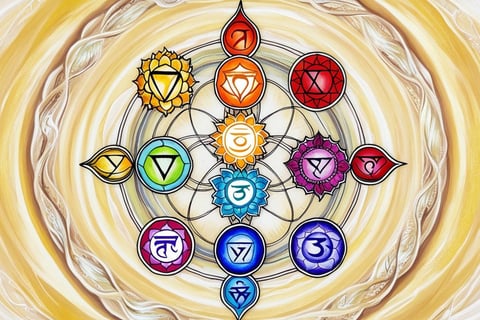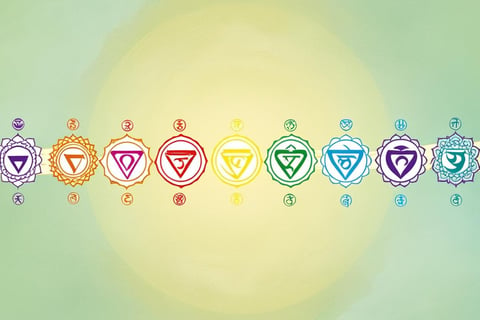Discovering the Benefits of Reiki: A Path to Healing and Balance
SOULBLOG
3/14/20255 min read


Click Here for mind wellness products
Click Here for soul wellness products
Understanding Reiki: What It Is and How It Works
Reiki is a holistic healing modality originating from Japan, which was developed by Mikao Usui in the early 20th century. The term "Reiki" translates to "universal life energy," and is based on the concept that there is a force of energy that flows through all living beings. Practitioners of Reiki believe that by channeling this energy, they can facilitate physical, emotional, and spiritual healing. The fundamental principle of Reiki asserts that disruptions or blockages in the flow of this energy can lead to illness or distress. Thus, the restoration of balance through Reiki can promote a state of well-being.
The methodology of Reiki encompasses various techniques for channeling energy, with the most common being hand placements. Practitioners gently place their hands on or above specific parts of the recipient's body, allowing the energy to flow through them and into the individual. This process is believed to create a calming and soothing effect, enabling the recipient to enter a relaxed state. In addition to direct touch, distance healing is another prominent method utilized in Reiki practice. This approach allows practitioners to send energy to individuals regardless of their physical location, highlighting the belief that energy knows no boundaries and can transcend time and space.
Intention plays a vital role in the effectiveness of Reiki treatments. The practitioner’s focus and intention guide the energy flow and positively influence the healing process, making it a collaborative effort between the giver and receiver. The practitioner acts as a conduit for universal life energy, facilitating the healing journey while ensuring the well-being of the recipient. This synergy between intention and energy signifies the essence of Reiki, making it a unique and compassionate approach to achieving harmony and balance in one’s life.
Physical and Emotional Benefits of Reiki
Reiki, a form of alternative therapy rooted in Japanese tradition, offers a myriad of physical and emotional benefits that enhance overall well-being. This holistic healing technique utilizes energy transfer through hand placement to promote relaxation and encourage the body’s natural healing processes. One of the primary advantages of Reiki is its remarkable ability to reduce stress. By alleviating anxiety and promoting a sense of calm, individuals often experience significant improvements in their emotional health, paving the way for a more balanced state of mind.
In addition to mental wellness, Reiki has been noted for its efficacy in physical healing. Many individuals report significant pain relief from chronic conditions such as arthritis, back pain, and migraines after receiving Reiki sessions. This pain-relieving effect can be attributed to the therapy's capacity to relax muscles and increase blood circulation, which aids in the healing process. Furthermore, studies have indicated that Reiki may enhance immune function, allowing the body to fend off illness more effectively.
Reiki also plays a vital role in addressing emotional issues. Many practitioners and recipients have shared testimonials highlighting its positive impact on anxiety and depression. By promoting feelings of peace, Reiki can assist individuals in processing traumatic experiences, fostering emotional resilience. Case studies reveal that those struggling with past traumas have benefited from the comforting, centering experience provided by Reiki. As emotional blockages are cleared, individuals often find themselves more capable of facing daily challenges, becoming more engaged with their lives.
Overall, the convergence of physical and emotional benefits makes Reiki an invaluable tool for individuals seeking healing and balance. Whether aiming to alleviate physical ailments or enhance emotional well-being, the practice of Reiki offers a gentle yet profound pathway toward holistic health.
Reiki as a Complementary Therapy: Integration with Conventional Medicine
Reiki, a form of energy healing, is increasingly recognized as a valuable complementary therapy that can enhance the effectiveness of conventional medical treatments. As healthcare continues to evolve, the integration of alternative therapies like Reiki into traditional care frameworks offers patients a holistic approach to healing. This practice can significantly support both the emotional and physical aspects of recovery from various medical conditions, including the managing of side effects associated with treatments such as chemotherapy and surgery.
Research has shown that patients who engage in Reiki sessions report reduced anxiety, pain, and fatigue, which are common challenges during complex treatments. For instance, a study published in the Journal of Alternative and Complementary Medicine found that patients receiving Reiki alongside their conventional treatments experienced a significant reduction in pain levels compared to those who did not participate in Reiki sessions. Furthermore, Reiki has been shown to promote relaxation and enhance mental clarity, encouraging a more positive outlook during the recovery process.
While exploring the incorporation of Reiki, it is crucial for patients to communicate openly with their healthcare providers. Transparent discussions can help address any concerns regarding the potential effects of Reiki on medical treatments. Many practitioners of conventional medicine are becoming more receptive to complementary therapies, and they may even recommend Reiki as a supportive option. It can be beneficial for patients to inquire about local Reiki practitioners or training programs that aim to ensure the treatment is delivered safely and effectively.
Incorporating Reiki as a part of a comprehensive treatment plan can thus empower patients, providing them with additional tools to aid in their healing journey. By blending traditional medicine with holistic approaches like Reiki, individuals can pursue a more balanced and complete recovery experience. Overall, this integration highlights the evolving landscape of health care, where patient-centered care increasingly acknowledges the importance of various healing modalities.
Getting Started with Reiki: How to Experience Its Benefits
Embarking on a journey into the world of Reiki can be both exciting and transformative. For those interested in experiencing the healing effects of Reiki, the first step involves finding qualified practitioners. Local holistic health centers, wellness studios, and even online directories can assist in locating experienced Reiki masters. When selecting a practitioner, it is advisable to review their credentials and gather feedback from previous clients to ensure you receive quality guidance.
During a Reiki session, clients typically lie down fully clothed while the practitioner lightly places their hands on or near the body. The atmosphere is often quiet and calming, designed to promote relaxation and enhance energy flow. Clients can expect to feel a gentle warmth, tingling sensations, or emotional release as the practitioner channels Reiki energy. Each experience is unique, and it is important to approach each session with an open mind.
For individuals interested in carrying the practice into their daily lives, pursuing Reiki training and certifications can be incredibly beneficial. This empowers individuals to give and receive Reiki, fostering a deeper connection to this healing modality. Numerous courses—both online and in-person—are available, catering to various levels from beginner to advanced. It is essential to seek programs that are recognized and taught by reputable instructors.
To enhance the Reiki experience further, creating a conducive environment at home is key. Designate a quiet space where you can practice without distractions, incorporating elements such as soft lighting, soothing music, and comfortable seating. Additionally, consider self-help techniques, such as meditation and breathing exercises, which complement the flow of Reiki energy. There is an abundance of resources available—books, websites, and community groups—that can deepen your understanding and enhance your practice of Reiki healing.




